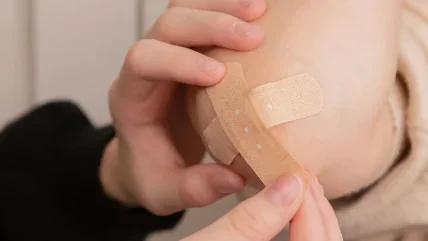
US-based regenerative medicine company StimLabs has announced the launch of Corplex P, a medical device derived from human umbilical cord extracellular matrix (ECM), in the US.
Corplex P is a dehydrated human umbilical cord particulate (dHUCP) device intended for the management of hard-to-heal wounds.
It can be used for partial and full-thickness wounds, pressure ulcers, venous ulcers, diabetic ulcers, chronic vascular ulcers, undermined wounds, and surgical wounds, among others.
In February this year, the US Food and Drug Administration (FDA) approved Corplex P, based on the safety and effectiveness of the technology through rigorous testing.
With the FDA approval, StimLabs became the first company to receive 510(k) approval for a human birth tissue product, which is a significant milestone in wound care.
Corplex P is optimised for rough wound beds, provides a complex, porous scaffold, resorbs naturally into the wound, and provides a moist wound environment, said the company.
StimLabs founder and CEO John Daniel said: “Chronic and acute wounds present a significant healthcare challenge, affecting millions of individuals each year.
“With Corplex P, StimLabs aims to address this challenge by providing clinicians and patients with an advanced solution for wound management.
“Corplex P offers an opportunity for a better quality of life for those in need of care and since its limited release, healthcare practitioners have shown excitement for the impact it’s making. We’re excited to now make this available nationally.”
Corplex P is designed to contain collagens, fibronectin, laminin proteoglycans, and glycosaminoglycans (GAGs), as connective tissue matrix components.
Unlike other xenograft products, its unique processing technique allows the preservation of the components, preventing the loss of GAGs and proteoglycans.
Its hydrophilic components, particularly hyaluronic acid, play an important role in the device’s absorptive properties.
Corplex P’s composition facilitates a moist wound environment, and its particulate format allows exudate to drain from the wound, enabling further moisture management.
Also, its particulate configuration provides conformability and wound bed contact, which allows Corplex P to be more readily incorporated into the wound as it heals.






